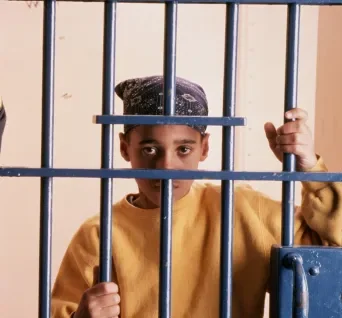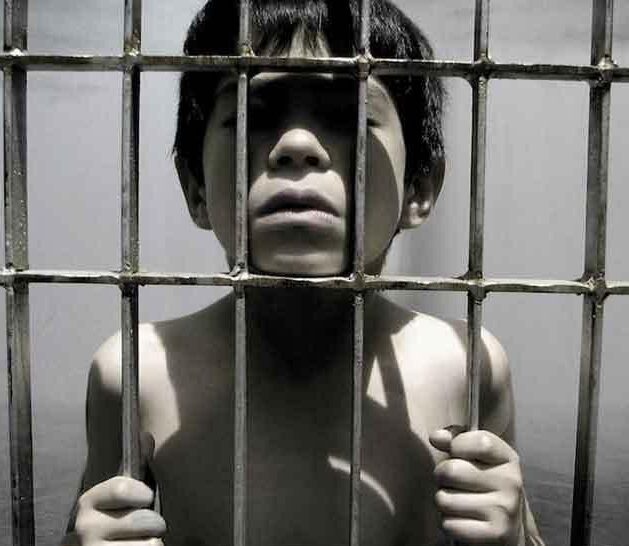Juvenile Law
Please wait while flipbook is loading. For more related info, FAQs and issues please refer to DearFlip WordPress Flipbook Plugin Help documentation.
Juvenile Law
When the second half of the 20th century began, concern arose for the protection of the best interests of juveniles, and this was to be done under international conventions and national legislation. The main goal of such legislation is to manage the important issue of juvenile delinquency while safeguarding the best interests of the child and his fundamental rights. Juvenile laws, also known as juvenile justice laws, refer to a set of legal provisions and procedures specifically designed to address the legal rights, responsibilities, and treatment of individuals who are classified as juveniles or minors. These laws are distinct from the criminal justice system that applies to adults. The main objective of juvenile laws is to ensure the well-being and rehabilitation of young individuals who have engaged in delinquent behavior or committed offenses. The philosophy behind these laws is based on the understanding that juveniles are still developing and possess a greater capacity for reform and rehabilitation compared to adults.
Pakistan’s criminal justice system in regard to juvenile justice had shortcomings such as inhuman conditions in detention centers, incapacitated staff of the prison, abuse and exploitation at the hands of police, a pathetic prosecution system, and an overwhelmed judicial system whose eventualities culminated in pre-trial offenders awaiting their trial. That’s why the need arose to make a special law, and Pakistan became a signatory to the United Nations Convention on the Rights of Children (UNCRC) on December 12, 2012. It took years for Pakistan to promulgate its special law, which deals with children. During the era of emergency, the first Juvenile Justice System Ordinance (JJSO) was enacted and remained in force until the promulgation of the Juvenile Justice System Act (JJSA) on May 24, 2018.
Following are the some features of Juvenile justice system act, 2018 which makes it more cognizant then Juvenile justice system ordinance:
- The JJSA introduced important definitions that were missing in the JJSO, including ‘Juvenile’ and ‘Juvenile Offender.’ A ‘Juvenile’ refers to a child whose offense is treated differently from an adult. A ‘Juvenile Offender’ is a child accused or found guilty of committing a crime. The JJSA broadened the range of institutions for juvenile offenders, now including certified institutions, training facilities, vocational centers, dar-ul-amaan, and women crisis centers. Previously, the JJSO only defined ‘Borstal institution’ as a place for detention and education. The JJSA also defined the term ‘best interest of the child’ to align with the UNCRC, emphasizing the child’s rights, needs, identity, and development. Lastly, the term ‘Medical Officer’ was introduced to handle cases where medical reports are necessary to determine a juvenile’s age or assess their mental or physical condition.
- Section 7 of the JJSA introduces a specific investigation procedure for juvenile offenders. It mandates that the investigation should be conducted by a police officer of equal or higher rank than a sub-inspector, under the supervision of the superintendent of police or the SDPO. The investigating officer must be supported by a probation officer or social welfare officer, as designated by the Government. Their role is to prepare a social investigation report, which will be appended to the report prepared under Section 173 of the Criminal Procedure Code, 1898 (Cr.P.C). These distinctions were not addressed in the JJSO.
- Section 5 of the JJSA outlines the mandatory steps for the arrest of a juvenile offender:
I. They must be placed in an observation home.
II. The guardian and probation officer must be promptly informed.
III. The police report should outline the referral process to the Juvenile Justice Committee for diversion.
- According to Section 2(p) of the JJSA, an ‘observation home’ is a temporary facility where juveniles are held after arrest, during remand, or throughout inquiry or investigation. The purpose is to ensure separation from adult offenders, emphasizing that juvenile offenders should not be detained in regular police stations.
- The JJSA introduces the concept of ‘diversion’ with a strong emphasis. It allows juvenile offenders to avoid formal judicial proceedings and be redirected to an alternative process. Diversion considers the offender’s social, cultural, economic, psychological, and educational background to determine responsibility and treatment. Restorative justice is emphasized, focusing on restoring the balance and repairing harm caused by the offense. Formal criminal justice systems often have negative effects on children, leading to a higher likelihood of repeat offenses. Diverted children have lower recidivism rates, particularly for first-time offenders. Section 9 of the JJSA allows for the diversion of both minor and major offenses, with the condition that the juvenile accused is not above sixteen years old for major offenses. Diversion can be initiated at any stage with the consent of the accused juvenile or guardian and can involve various modes such as restitution, reparations, apologies, community service, fines, placement in a Juvenile Rehabilitation Centre, or reprimands.
- The JJSA categorizes offenses into minor, major, and heinous based on the punishment prescribed. Minor offenses have imprisonment up to three years, major offenses have imprisonment between three to seven years, and heinous offenses are serious and punishable with death, life imprisonment, or imprisonment exceeding seven years under the PPC or other laws. This categorization is a departure from the JJSO.
- Section 17 of the JJSA ensures special safeguards for female juvenile offenders, prohibiting their arrest or interrogation by male officers. Female juvenile offenders can only be detained in juvenile rehabilitation centers exclusively for females. This distinction was absent in the JJSO, where female juvenile offenders were treated similarly to adult female offenders. The JJSA recognizes the vulnerability of female juvenile offenders and establishes separate detention facilities for them.
- The JJSA mandates the establishment of exclusive Juvenile Courts within three months of its commencement. These courts are required to decide juvenile cases within six months, with the option to seek an extension from the High Court if necessary. Failure to seek an extension allows the complainant or the juvenile to apply to the High Court regarding the delay in case resolution.
- The JJSA requires the formation of the Juvenile Justice Committee within three months of the Act’s commencement. The committee is headed by a Judicial Magistrate and includes the district public prosecutor, a senior member of the local Bar, and a probation officer or social welfare officer of at least BPS-17 rank. The committee is responsible for overseeing the completion of the diversion process.
Under the JJSA, violations related to disclosing the identity of a juvenile without permission and printing/publishing court proceedings without permission are punishable offenses. Such permissions can be granted by the in-charge of a police station, investigating police officer, authorized by the juvenile or their next-of-kin in writing. Only recognized welfare institution chairman or secretary can be authorized for printing or publication. The JJSO did not have penal provisions for these violations.
Section 16 of the JJSA prohibits the death penalty for offenses committed by individuals who were juveniles at the time. It also prohibits juveniles from being subjected to imprisonment, labor, fetters, handcuffs, or corporal punishment during custody, except in certain circumstances. These exceptions include juveniles above sixteen years, escape from custody, involvement in heinous offenses, or previous life imprisonment convictions. In such cases, limited handcuffing or solitary confinement for up to twenty-four hours is allowed in rehabilitation centers or observation homes.
In the last the introduction of Pakistan’s new criminal justice framework for juvenile offenders is a positive step towards protecting children’s rights. However, determining the age of an accused claiming to be a juvenile remains a contentious issue, leading to ongoing challenges in court cases. The latest Juvenile Justice System Act of 2018 has improved the law but falls short of providing adequate justice for children. This uncertainty and inadequacy in the legal system make juveniles in Pakistan vulnerable to discrimination and unjust decisions, depriving them of their basic human rights. Pakistan needs to focus on legislative improvements and their effective implementation to address these issues.

Kamran Ali Channa
The Lex Writer



